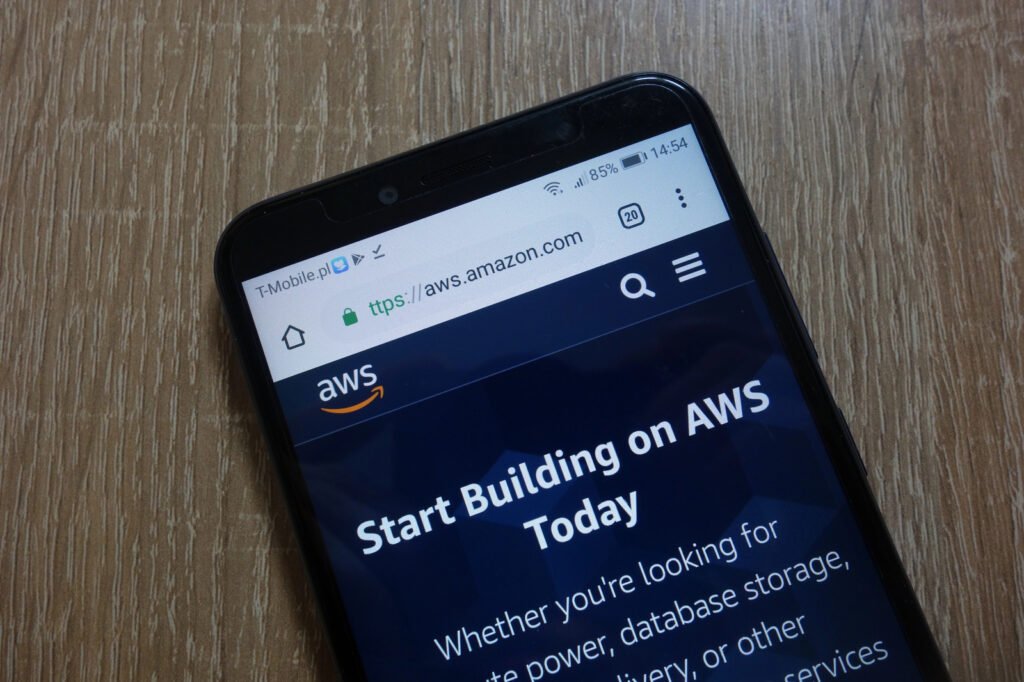Amazon CloudWatch stands out as a critical tool, offering powerful monitoring and management capabilities for AWS resources and your applications.
Amazon AWS is a leader in cloud computing, and its robust suite of services is designed to optimize infrastructure, bolster security, and provide unmatched scalability.
This blog explores the ins and outs of Amazon AWS CloudWatch—from its aws resources, standout features to practical implementation tips—so you can fully leverage its potential for your business.
Whether you're managing simple application performance or overseeing a complex multi-cloud ecosystem, CloudWatch can keep your operations running smoothly.
What is Amazon AWS CloudWatch?

Amazon CloudWatch is a monitoring and observability service designed for developers, system administrators, and IT managers.
It provides system wide performance insights into your AWS infrastructure and applications by collecting metrics, logs, and custom data from various sources.
These insights enable real-time operational health monitoring, automatic alerts for anomalies, and the ability to optimize resource allocation.
Think of it as your "control tower" for AWS systems. It ensures your applications run efficiently while helping you stay prepared to resolve operational health issues before they escalate.
CloudWatch can perform root cause analysis and you no longer need to rely on guesswork—your systems’ performance, availability, and operational health are backed by actionable data.
Key Features of Amazon AWS CloudWatch

Amazon is packed with features that simplify cloud AWS resources. Here are the key capabilities that make it an indispensable tool:
1. Observe and Monitor Resources
CloudWatch provides out-of-the-box custom metrics for AWS services like EC2 instances, RDS databases, Lambda functions, and more. These metrics include CPU usage, disk I/O, memory utilization, and request count. For businesses that need specific insights, CloudWatch also allows you to create custom metrics tailored to your unique needs.
2. Alarms and Notifications
CloudWatch enables you to set alarms based on predefined thresholds (e.g., high CPU usage or low available disk space). Once a threshold is crossed, you can receive real-time notifications through Amazon Simple Notification Service (SNS). These alerts allow you to take immediate action to resolve performance issues.
3.Perform Root Cause Analysis with CloudWatch Logs
CloudWatch Logs aggregates, monitors, and filters your application and system wide performance logs. It’s an incredibly powerful tool to detect errors, debug your systems, and gain deeper visibility into application behaviour. It simplifies tasks like identifying bottlenecks or tracking down the root cause of intermittent issues.
4. Dashboards
CloudWatch Dashboards enable customizable visualizations combining multiple metrics. This feature is particularly useful for real-time tracking of key performance indicators (KPIs) across systems, helping teams identify changes in application performance at a glance.
5. Anomaly Detection
With machine learning-powered Anomaly Detection, you can identify unusual patterns across your metrics automatically. This feature minimizes the effort required to sift through large datasets to detect irregularities.
6.Actionable insights
With Amazon CloudWatch, you can go beyond basic monitoring and gain actionable insights into your AWS infrastructure. By leveraging the above features, you can optimize resource allocation, detect issues before they escalate, and continually improve application performance.
Practical Implementation Tips for Amazon CloudWatch

Here are some practical tips to help operate efficiently with automation and get you get started:
- Start with a clear understanding of your business objectives and what resources need monitoring.
- Familiarize yourself with the metrics available out-of-the-box for each service in your infrastructure.
- Create custom metrics to gain deeper visibility into specific areas of your applications.
- Set alarms based on thresholds that align with your business goals and needs.
- Utilize dashboards to create visualizations that make it easier to track performance and spot anomalies.
- Leverage CloudWatch Logs for root cause analysis, and consider integrating with other AWS services like Amazon Elastic Compute Cloud (EC2), Amazon Simple Storage Service (S3), or Amazon DynamoDB.
- Regularly review your monitoring strategy to ensure it aligns with your evolving business requirements.
Why Businesses Choose CloudWatch

Amazon CloudWatch drives business efficiency and resilience in several impactful ways, especially for organizations leveraging cloud infrastructure.
1. Operate Efficiently with Automation
It console collects comprehensive data from diverse AWS resources, offering centralized insights. Businesses no longer need to rely on piecemeal third-party monitoring solutions—CloudWatch streamlines observability, providing actionable data from a single platform.
2. Cost Management
Unused or underused resources can inflate your cloud spending. This service helps optimize costs by monitoring resource utilization patterns, making it easier to right size your environment and turn off unnecessary services.
3. Enhanced Performance Optimization
AWS CloudWatch will monitor resources and applications as well as log data, it ensures that resources are allocated effectively. By tracking trends and analysing bottlenecks, system administrators can use actional insights to enhance application and infrastructure performance.
4. Flexibility for All Business Sizes
Whether you're a growing startup or an enterprise-scale organization, it adapts to your needs. Its features are relevant for small teams looking to optimize resources proactively, monitor basic application metrics as well as larger teams managing complex multi-cloud setups.
How to Get Started with Amazon CloudWatch

If you’re new, don’t worry—it’s easy to get started. Follow these steps for effective implementation:
Step 1. Enable CloudWatch for Your AWS Resources
Log in to the AWS Management Console, go to "CloudWatch," and enable monitoring for your specific services. Many AWS services have CloudWatch metrics activated by default, so you may already have access to basic data.
Step 2. Set Up Alarms
Start by identifying key thresholds for your metrics, such as CPU utilization at 80%. Create alarms within the interface, and configure notifications through SNS to alert your team when thresholds are exceeded.
Step 3. Use Logs
Install the `CloudWatch Agent` on your servers for collecting logs beyond the default services. Once configured, use CloudWatch Logs Insights to run queries and identify trends in your log data.
Step 4. Build Custom Dashboards
Design a CloudWatch Dashboard to visualize your application’s health and performance metrics. Add widgets for CPU usage, memory, and network traffic for quick, comprehensive insights.
Step 5. Integrate with AWS Lambda
For businesses using serverless architectures, integrate CloudWatch with AWS Lambda to track performance metrics like invocation counts and error rates, allowing automated handling of resource disruptions.
Advanced Use Cases for CloudWatch

Once you’re comfortable with the basics, explore these advanced use cases to unlock the full potential of CloudWatch:
1. Custom Metrics
If your application tracks specific performance data (e.g., user transactions per second), you can define and monitor custom metrics. This feature ensures tailored insights that align with your unique business goals.
2. Automated Actions to Incident Responses
Combine CloudWatch with AWS Lambda to automatically react to automated workflows. For instance, when an alarm is triggered, you can configure Lambda to restart a faulty process or scale your resources.
3. Log Insights
Leverage CloudWatch Logs Insights for advanced log queries. For example, you can filter logs to identify errors containing specific keywords, making debugging faster and more efficient.
4. Anomaly Detection
Employ machine learning-based anomaly detection to identify and respond to unusual patterns, ensuring minimal disruption to operations. Use this feature to safeguard critical applications or sensitive systems.
Why Amazon CloudWatch is Essential for Cloud Monitoring

Businesses today rely on flexibility, speed, and data-driven decisions to gain a competitive edge.
Amazon CloudWatch makes all of this possible by centralizing observability and ensuring your applications run efficiently.
Whether you're reducing expenses, enhancing customer experiences, or simply looking for better ways to observe and monitor resources, CloudWatch is essential to building a dynamic and reliable cloud infrastructure.